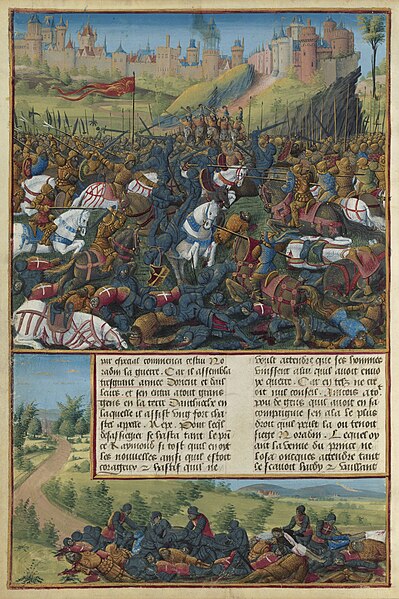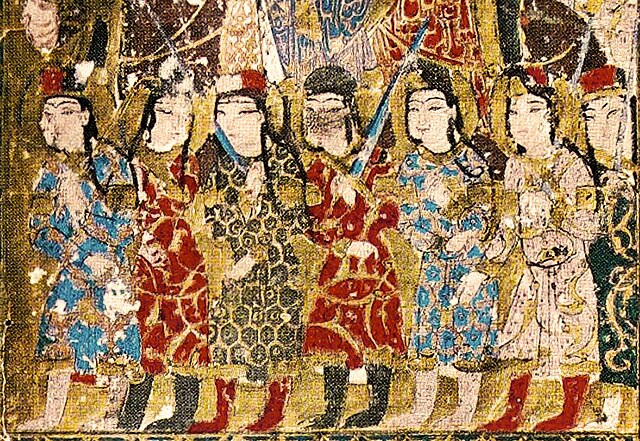Otto of Freising was a German churchman of the Cistercian order and chronicled at least two texts which carries valuable information on the political history of his own time. He was the bishop of Freising from 1138. Otto participated in the Second Crusade; he lived through the journey and reached Jerusalem, and later returned to Bavaria in the late 1140s, living for another decade back in Europe.
Otto of Freising, as depicted on a 13th-century stained glass window in the Cistercian Abbey of Heiligenkreuz, Austria
Painting of Otto of Freising by Hans Part in the Babenberger Stammbaum, ca. 1490, Stift Klosterneuburg. The bishop is looking at the cathedral and the city of Freising from the east bank of the Isar river.
The Second Crusade (1147–1150) was the second major crusade launched from Europe. The Second Crusade was started in response to the fall of the County of Edessa in 1144 to the forces of Zengi. The county had been founded during the First Crusade (1096–1099) by King Baldwin I of Jerusalem in 1098. While it was the first Crusader state to be founded, it was also the first to fall.
Illustration of the Battle of Inab, by Jean Colombe from the Passages d'outremer by Sébastien Mamerot, c. 1473–1474.
St Bernard in stained glass, from the Upper Rhine, c. 1450
The Siege of Lisbon by D. Afonso Henriques by Joaquim Rodrigues Braga (1840)
Zengid soldiers, armed with long swords and wearing Turkic military dress: the aqbiya turkiyya coat, tiraz armbands, boots and sharbush hat. Manuscript Kitab al-Aghani, 1218–1219, Mosul.






